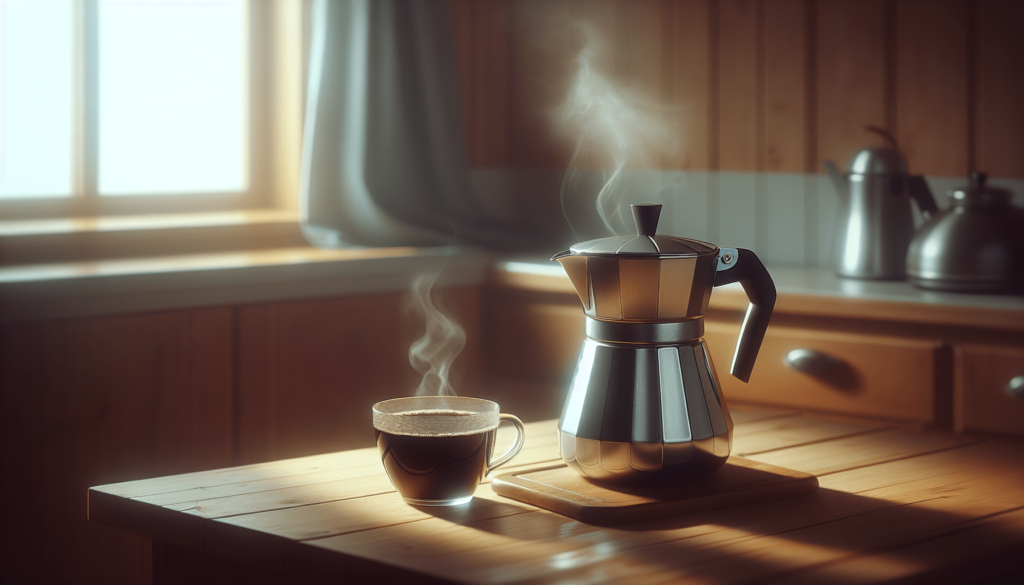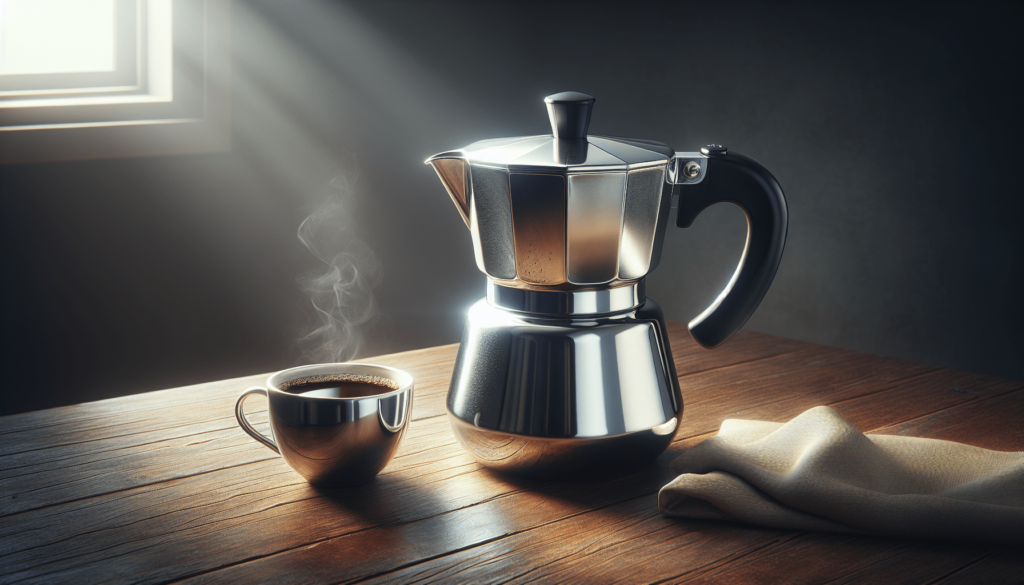Have you ever wondered how much caffeine is in percolated coffee? Whether you’re a coffee aficionado or just need your morning cup to get going, understanding the caffeine content in your percolated coffee can be quite enlightening. Let’s dive into the details of what makes this brewing method unique and how much of that beloved stimulant ends up in your cup.

What is Percolated Coffee?
Percolated coffee is brewed using a percolator—a type of pot used for brewing coffee by continually cycling the boiling brew through the grounds using gravity until the desired strength is reached. This method was highly popular in the mid-20th century but has seen a decline with the advent of drip coffee makers and other brewing methods. However, it’s still cherished for its rich and robust flavor.
How Does a Percolator Work?
A percolator has a pot, a vertical tube, and a perforated chamber where the coffee grounds sit. When the water in the pot starts to boil, it travels up the tube and is sprayed over the coffee grounds. The brewing process is repeated until the brew reaches the desired strength.
Key Factors Affecting Caffeine Content
Several factors influence the caffeine content in percolated coffee. Understanding these can help you determine how strong your brew will be. These factors include:
- Type of Coffee Beans: Different coffee beans have varying caffeine contents. Generally, Robusta beans have more caffeine than Arabica beans.
- Amount of Coffee Used: The more coffee grounds you use, the higher the caffeine concentration.
- Brew Time: The length of time you brew the coffee affects how much caffeine is extracted from the grounds.
- Water Temperature: Higher temperatures can extract more caffeine but may also lead to a bitter taste.
Type of Coffee Beans
Choosing the type of coffee beans is crucial. Robusta beans typically contain about twice the caffeine of Arabica beans. Here’s a quick comparison:
| Coffee Bean Type | Average Caffeine Content per Serving |
|---|---|
| Arabica | 1.2% – 1.5% |
| Robusta | 2.2% – 2.7% |
Amount of Coffee Used
The caffeine content increases with the quantity of coffee grounds used. A standard measure might be one to two tablespoons of coffee per six ounces of water.
Brew Time and Water Temperature
The time you allow your coffee to brew and the temperature of the water significantly impact caffeine extraction. More prolonged brewing and higher temperatures generally result in a stronger caffeine content but can alter the flavor profile.
Measuring Caffeine in Percolated Coffee
Accurately measuring the caffeine in percolated coffee can be somewhat challenging. The caffeine content in a typical 8-ounce cup of percolated coffee can range widely.
General Estimates
Here are some general estimates to help guide you:
| Brew Time (Minutes) | Approx. Caffeine Content (mg per 8 oz) |
|---|---|
| 5 | 80-100 |
| 10 | 90-120 |
| 15 | 100-140 |
The longer you brew, the more caffeine is typically extracted. However, the taste may also become increasingly bitter.
Lab Testing for Precision
For those who need an exact number, laboratory caffeine testing is the most accurate method. These tests can measure the specific amount of caffeine in your coffee, but they require specialized equipment and can be quite costly and time-consuming.
Comparing Percolated Coffee to Other Brewing Methods
To fully appreciate percolated coffee, it’s helpful to compare it to other popular brewing methods like drip, French press, and espresso. Each method has a unique impact on the caffeine content and flavor.
Drip Coffee
Drip coffee is one of the most common brewing methods today. It typically contains less caffeine than percolated coffee but is easier to control for consistency.
| Brewing Method | Average Caffeine Content (mg per 8 oz) |
|---|---|
| Percolated | 100-140 |
| Drip | 95-165 |
French Press
French Press coffee can have a similar caffeine content, but the brewing process differs, involving steeping coffee grounds in hot water before pressing the grounds out.
| Brewing Method | Average Caffeine Content (mg per 8 oz) |
|---|---|
| Percolated | 100-140 |
| French Press | 80-120 |
Espresso
Espresso is known for its strong flavor and high caffeine content per ounce, although a typical serving is much smaller than 8 ounces. Percolated coffee can approximate espresso’s intensity if brewed long enough.
| Brewing Method | Average Caffeine Content (mg per 1 oz) |
|---|---|
| Percolated | 12-17 |
| Espresso | 63-75 |

The Health Implications of Caffeine
Understanding how much caffeine you’re consuming is essential for health reasons. While caffeine can boost your energy and concentration, excessive intake can lead to adverse effects.
Benefits of Caffeine
Caffeine has several benefits, including:
- Increased Alertness: Caffeine stimulates the central nervous system, helping to improve alertness and concentration.
- Enhanced Physical Performance: Caffeine can enhance physical performance by mobilizing fatty acids from the fat tissues.
Risks of Excessive Caffeine
However, too much caffeine can have negative side effects, such as:
- Insomnia: Overconsumption of caffeine can lead to difficulty falling and staying asleep.
- Anxiety: Excessive caffeine can increase anxiety levels and cause jitteriness.
- Heart Issues: High doses can lead to increased heart rate and blood pressure.
Recommended Caffeine Intake
Health experts typically recommend a maximum of 400 mg of caffeine per day for most adults. This is roughly equivalent to four 8-ounce cups of percolated coffee.
Customizing Your Percolated Coffee for Caffeine Levels
If you’re keen on adjusting your caffeine intake, there are several ways to customize your percolated coffee.
Adjust the Coffee-to-Water Ratio
One of the simplest methods to alter caffeine content is to adjust the amount of coffee grounds you use. More grounds will increase the caffeine concentration.
Modify Brew Time
As mentioned earlier, extending the brew time can extract more caffeine but will also alter the flavor. Finding the right balance for your taste and caffeine needs can take some experimentation.
Grind Size and Freshness
The grind size of your coffee can also impact caffeine extraction. Finer grinds usually result in more caffeine but can make the coffee taste more bitter. Additionally, using fresh coffee grounds can help you get the most caffeine and best flavor.
Conclusion
Understanding the caffeine content in percolated coffee can help you tailor your brewing process to get the perfect cup. From the type of beans you use to the length of time you brew, each decision affects the final caffeine level and taste. By considering these factors, you can customize your percolated coffee to match your caffeine preferences and enjoy each cup to the fullest.
Whether you love the robust flavor of percolated coffee or are just curious about its caffeine content, these insights can help you make your perfect brew. So, the next time you savor your percolated coffee, you’ll know just how much caffeine you’re getting and what factors contributed to that delightful cup.
